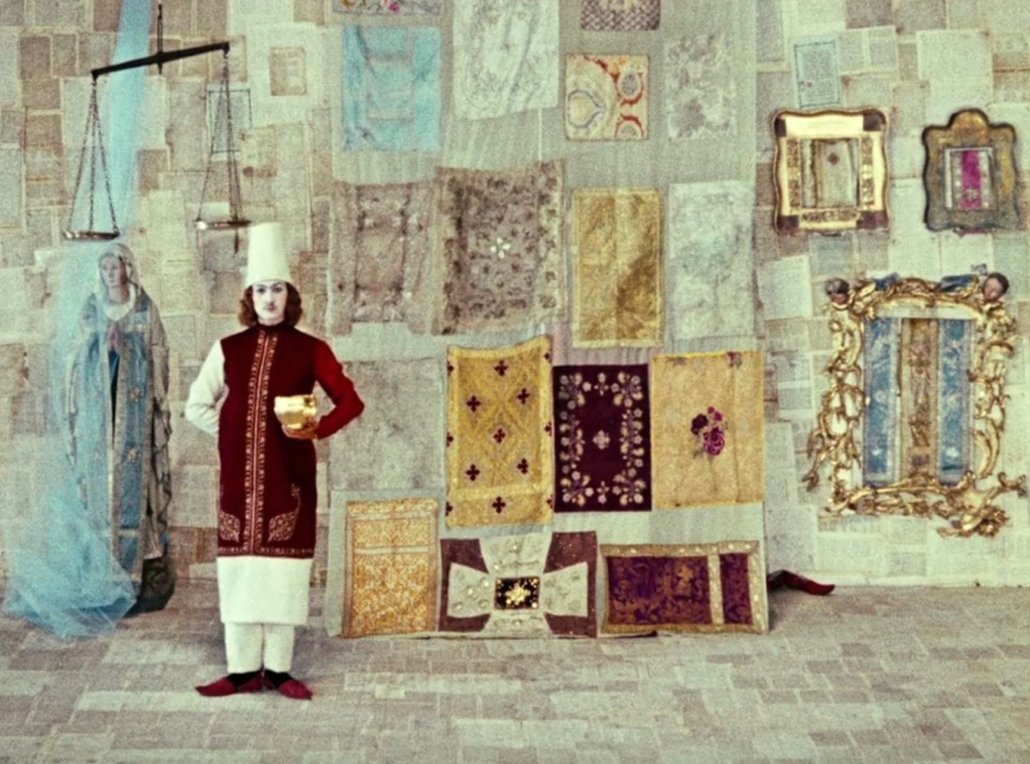The New Renaissance: Gaga to Parajanov to Sayat-Nova: Nothing has changed

Music and film often go hand in hand.
The emotional cues of music enhance a film, and recently, musicians have been creating short films to accompany the release of their music. One notable pop artist who made headlines in 2020 was Lady Gaga for her “911” music video.
Amassing over 71 million views on YouTube, it is reasonable to say this was a widely popularized video. In an interview with Vogue, Gaga said the inspiration behind “911” was an antipsychotic medication, Olanzapine, prescribed to the singer. The video attempted to visualize the “poetry of pain” as well as represent a connection between reality and dreams.
Gaga opted to structure her music video from the lesser-known surrealist film, “The Color of Pomegranates.” Released in 1969, “The Color of Pomegranates” is director Sergei Parajanov’s masterpiece.
Inspired by the life of 18th century Armenian poet Sayat-Nova, one of the most notable features of “The Color of Pomegranates’’ is the lack of dialogue.
Instead, it plays almost like an elongated poem, with short verses introducing each chapter, and rich set designs and carefully choreographed movements visually depicting the story. In Sayat-Nova’s poems, daggers, silks, brocades, sackcloths and ashes were all symbols of love. Playing with the heavy use of metaphors, the beautifully designed sets of Parajanov’s film reflect the same intricacy and depth of meaning.
The opening shot of “The Color of Pomegranates” is a single verse, reading, “I am the man whose life and soul are torment.” Three pomegranates proceed to bleed out onto a white cloth, and it becomes apparent that this film is not a direct depiction of a historical figure’s life but rather a more intimate dissection of Sayat Nova’s experiences and mentality.
Already, there appears to be a connection between the first line of the film and the purpose behind “911.” In keeping with Gaga’s idea of the “poetry of pain,” starting a film about a poet’s life with the line “I am a man whose life and soul are torment” appears to align precisely with the central theme of the song. However, more than this obvious connection, the visual depiction of the “911” music video connects on a deeper level to “The Color of Pomegranates.”
In the opening shot of “911,” Gaga, wrapped in multi-colored fabrics, lies alone in the sand with pomegranates at her feet. The parallel between the pomegranates at Gaga’s feet and the pomegranates that bleed onto the white sheet at the beginning of “The Color of Pomegranates” are also symbolic of another main quality of Sayat-Nova: isolationism.
Before analyzing his work, we must understand a few things about Sayat-Nova. Born in 1712, Sayat-Nova was an ashough, or traveling musician. Through this experience, he created new styles of music and poetry. An element of self-awareness and separation is clearly present in his love poetry, no doubt influenced by the traveling aspect of his life.
Gaga’s video and Parajanov’s film both use pomegranates to further depict Sayat-Nova’s themes of isolationism. Dating back to the Ancient Greeks, pomegranates have been representative of both fertility and death. The pomegranates, bleeding out onto the sheet in the film and cast away at Gaga’s feet in the music video, create a space between the individual and the perceived plethora of love. In this sense, through Lady Gaga, Parajanov and Sayat-Nova, a multigenerational story is being told regarding isolation and love.
Moreso than this symbolic analysis of the “911” music video and “The Color of Pomegranates,” Parajanov’s work does provide a bridge between the modern art world and that of centuries ago.
Whether intentional or not, Lady Gaga did more than pay homage to a brilliant surrealist filmmaker. Instead, she linked herself to an ever-growing chain of artists who continually adapt past works into modern pieces. Now, because of the “911” music video and “The Color of Pomegranates,” a direct connection can be placed from an existing artwork from 2020 to a poet from the 18th century.
Seeing Sayat-Nova’s poetry develop into a film and later into a music video proves art is a consistent movement, layering itself constantly on the past. However, these works of art, whether from the 18th century or the 20th, prove human emotion is universal, and the problems and feelings of the past can be seen just as clearly in the present. Nothing has changed; we are the same.
Jina Umakanthan is a freshman writing about the continuous relationship between present and past artwork. Her column, “The New Renaissance” runs every other Monday.

